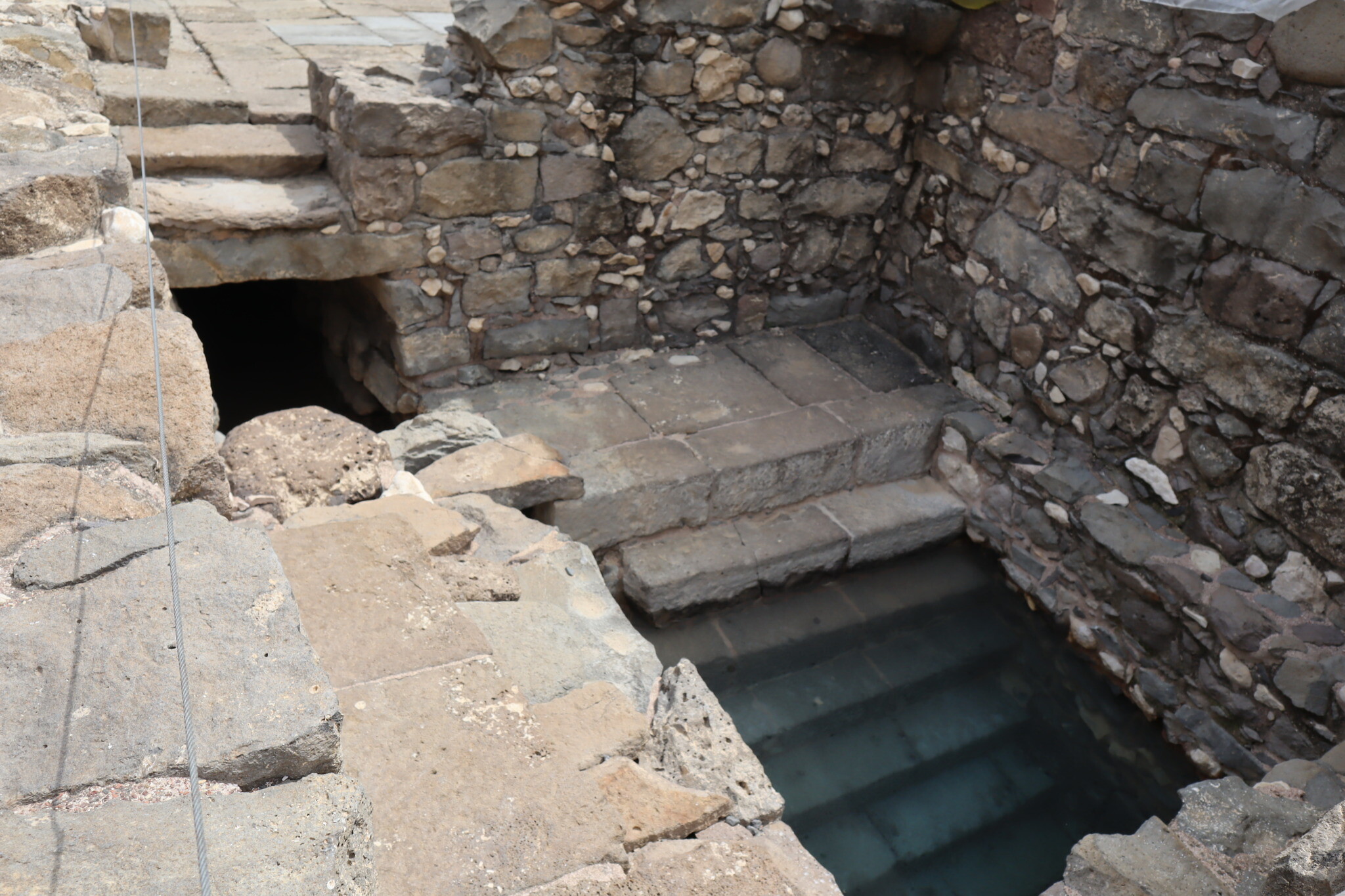In our previous discussion, we began our study into the intricacies of God’s divine plan for sanctification—a plan that predates time itself. We explored the concept of God’s desire for a “holy nation”, ordained before the foundation of the world to serve as an everlasting kingdom of priests under the reign of our great high priest; Jesus the Messiah. We discussed how God’s pretemporal sanctification of this kingdom should be understood, not as the predestination of specific individuals, but rather as His claim to this kingdom collectively as His chosen people and His will that they be set apart for His purposes. Just as He claimed Israel collectively as His chosen people, so too the church as a whole is elected corporately to be the kingdom of God. Today, we’ll continue our study by delving into how this relates to individual sanctification both in the initial declarative sense as well as in the ongoing progressive sense.
Sanctification Declared from the Beginning
 To review, before the foundation of the world, God preordained the establishment of a kingdom that would stand as a beacon of His glory for eternity. This divine decree echoed throughout Scripture was always intended to transcend ethnicity, gender, and all other allegiances and affiliations. That is, God never intended His holy kingdom to be limited to only the descendants of Abraham. Rather, God’s intention is the original mandate and vocation given to Adam and Eve in the Garden; to subdue creation and rule the earth as God’s divine image-bearing stewards; His holy priesthood over all the earth. Mankind’s failures got things off-track, but God’s will and His plan never changed. The gospel of Christ (the second Adam) is that through His death, burial, resurrection and ascension; God’s original plan is now back on track. He now calls all humanity to enter into a new covenant of faith inaugurated by the blood of Christ and join the kingdom under the reign of Jesus, the King.
To review, before the foundation of the world, God preordained the establishment of a kingdom that would stand as a beacon of His glory for eternity. This divine decree echoed throughout Scripture was always intended to transcend ethnicity, gender, and all other allegiances and affiliations. That is, God never intended His holy kingdom to be limited to only the descendants of Abraham. Rather, God’s intention is the original mandate and vocation given to Adam and Eve in the Garden; to subdue creation and rule the earth as God’s divine image-bearing stewards; His holy priesthood over all the earth. Mankind’s failures got things off-track, but God’s will and His plan never changed. The gospel of Christ (the second Adam) is that through His death, burial, resurrection and ascension; God’s original plan is now back on track. He now calls all humanity to enter into a new covenant of faith inaugurated by the blood of Christ and join the kingdom under the reign of Jesus, the King.
Understanding God’s sanctification of the church in this way not only clears up passages regarding predestination and sanctification before the beginning of time (Eph 1:4, 2 Thess 2:13, 1 Pet 1:1-2), but it also goes a long way toward helping us understand verses that suggest instantaneous sanctification at the moment of conversion or at baptism (Col 6:11, Eph 5:25-27, Acts 26:18) or at Jesus’ crucifixion (Col 1:21-22, Heb 10:10, Heb 13:12). Recall from last week that the word sanctification has two related but distinct meanings. On the one hand, sanctification can be the process by which we become holy; growing into the full measure of Christ as we learn to adopt His attitude and obey His commands. On the other hand, sanctification can be a declaration of holiness; a consecration devoting us to a specific purpose or vocation. It is in this second since that God sanctified His church before the beginning of time; consecrating it to be His holy nation, His kingdom of priests. The gospel, at it’s core, is the story of how God inaugurated this kingdom through Jesus’ death, burial, resurrection and ascension (Mark 1:14-15, Luke 4:43, Matthew 26:28). Consequently, anyone who enters into His kingdom through faith in the gospel of Jesus Christ and the covenant instituted by His blood immediately becomes a recipient of that “elect” status and holy mandate (1 Peter 2:9). They are sanctified; consecrated by God and devoted to a special purpose: to be citizens of the kingdom of light, a holy priesthood of the Most High God representing His reign in all the earth.
:max_bytes(150000):strip_icc()/Crucifixion-Definition-5841eb355f9b5851e56dbb11.jpg) This vocation, however, requires more than just God’s declaration and mandate. It requires the believer’s holiness to be actualized and brought to true fulfillment. His people would need to be redeemed from the kingdom of death if they are to become citizens of the kingdom of light (Colossians 1:13-14). They would need to receive atonement for their sins if they are to be in His presence (Hebrews 9:11-14, Hebrews 10:10-14). They would need to be transformed into the likeness of Christ if they are to properly bear His image in the coming new creation (Romans 8:29, 1 Corinthians 15:49, Colossians 3:10). Redemption and atonement were accomplished through Jesus’ death and resurrection and made available through the covenant instituted by His blood. (We discussed this at length in our 3-part study on the atonement.) The moment a new believer enters into the covenant family, they are redeemed and receive full atonement for their sins through the blood of Christ.
This vocation, however, requires more than just God’s declaration and mandate. It requires the believer’s holiness to be actualized and brought to true fulfillment. His people would need to be redeemed from the kingdom of death if they are to become citizens of the kingdom of light (Colossians 1:13-14). They would need to receive atonement for their sins if they are to be in His presence (Hebrews 9:11-14, Hebrews 10:10-14). They would need to be transformed into the likeness of Christ if they are to properly bear His image in the coming new creation (Romans 8:29, 1 Corinthians 15:49, Colossians 3:10). Redemption and atonement were accomplished through Jesus’ death and resurrection and made available through the covenant instituted by His blood. (We discussed this at length in our 3-part study on the atonement.) The moment a new believer enters into the covenant family, they are redeemed and receive full atonement for their sins through the blood of Christ.
Sanctification Declared at Baptism?

It should be no surprise then, that baptism is often described as both “washing away our sins” (Acts 22:16, Titus 3:5, Ephesians 5:25-26) and “dying and being raised to new life” (Romans 6:3-4, Colossians 2:12). This is why some of these passages seem to connect sanctification with baptism or symbolic washing. Let me explain: Today, many see baptism as a way of joining the local church; but in the first century baptism was seen as the traditional initiation rite of a new believer into the kingdom of God universally. The practice originated from the Jewish mikvah; a symbolic ritual demonstrating repentance. The mikvah did not originally depict the removal of guilt for past sins, but a cleansing of the mind and a commitment to future purity. However, as a rite of initiation into the kingdom of God, it becomes so much more. Most will agree that bathing in physical water cannot purify sins. However, in the early church, baptism marked a definitive moment when a new believer publicly repented of his sins, pledged his loyalty to Jesus and accepted his new vocation in God’s eternal kingdom (1 Peter 3:21). So when the biblical writers say baptism “washes away sins” they mean that it marks our initiation into the covenant family and signifies the moment when we receive atonement for sins through repentance and faith in Jesus’ atoning death on the cross.
Like atonement, redemption from the dominion of death is also depicted in the act of baptism. Paul beautifully describes baptism as reenacting the gospel story itself. We crucify the flesh and die to ourselves in repentance (Romans 6:6, Galatians 2:20). We are buried with Christ in baptism and are then raised to live a new life (Romans 6:4, Colossians 2:12). As we discussed in an earlier study, baptism is a loyalty oath. We commit to dying to our old way of life and devote (or consecrate) ourselves to Christ, publicly declaring Him to be our king and representative. By identifying with Him in this way we share in His defeat of death and His subsequent resurrection (Romans 6:5, Philippians 3:10-11, Galatians 3:27). The dominion of death holds no claim on the Messiah and, by extension, it has no power over those He represents (Romans 6:9, Hebrews 2:14-15). Thus, the life we live after swearing allegiance to Christ in baptism is a sanctified life cleansed of sin (atonement) and freed from the bonds of sin and death (redemption).
To be clear, the physical act of symbolic washing accomplishes neither atonement nor redemption. Rather, it is the repentance and loyalty pledge implicit within the act of baptism that initiates our participation in the new covenant (1 Peter 3:21). Both atonement and redemption were achieved on the cross of calvary and are applied to believers when they enter into this covenant through faith. Recall from an earlier post that the word “faith” in scripture is more than simply “belief.” It implies a covenant relationship built upon loyalty, devotion, and trust. Thus, Baptism is simply the traditional (and biblical) method by which new believers indicate publicly that they accept the terms of this covenant and begin their new life in Christ through a pledge of faith.
 Questions inevitably arise: “Can a person be saved without being baptized?”, “What if there’s no water?”, “What if they lived a faithful life, but were never baptized?”, “Does it have to be immersion or is sprinkling or pouring okay?”, “What about infant baptism?”. While these questions are valid and worth studying, they are beyond the scope of the current discussion. That said, these concerns have been raised since the very beginning of Christianity. While scripture doesn’t explicitly address every question that arises from this topic (which is why these things are debated among Christian denominations to this day), other Christian writings from the first century to within a few generations of the Apostles can help to shed some light on how the early church seems to have approached these issues. The Didache, the First Apology of Justin Martyr, and Tertullian’s “On Baptism” (to name a few) all deal with some aspect of the questions that naturally arise from what we read in scripture regarding baptism. These writings should not be understood as infallible or as having the same authority as scripture, but they do offer a window into the mind and teaching of early Christians who were dealing with many of the same interpretive struggles that we deal with today when reading scripture. Unlike us, however, the writers of these works lived in an age when the Apostles’ ministry and teaching was still a recent memory in comparison to modern times. I encourage anyone with honest questions (and not holding dogmatic preconceptions) to consider these and other writings from the 1st, 2nd, or 3rd centuries before drawing any conclusions that go beyond what scripture explicitly teaches.
Questions inevitably arise: “Can a person be saved without being baptized?”, “What if there’s no water?”, “What if they lived a faithful life, but were never baptized?”, “Does it have to be immersion or is sprinkling or pouring okay?”, “What about infant baptism?”. While these questions are valid and worth studying, they are beyond the scope of the current discussion. That said, these concerns have been raised since the very beginning of Christianity. While scripture doesn’t explicitly address every question that arises from this topic (which is why these things are debated among Christian denominations to this day), other Christian writings from the first century to within a few generations of the Apostles can help to shed some light on how the early church seems to have approached these issues. The Didache, the First Apology of Justin Martyr, and Tertullian’s “On Baptism” (to name a few) all deal with some aspect of the questions that naturally arise from what we read in scripture regarding baptism. These writings should not be understood as infallible or as having the same authority as scripture, but they do offer a window into the mind and teaching of early Christians who were dealing with many of the same interpretive struggles that we deal with today when reading scripture. Unlike us, however, the writers of these works lived in an age when the Apostles’ ministry and teaching was still a recent memory in comparison to modern times. I encourage anyone with honest questions (and not holding dogmatic preconceptions) to consider these and other writings from the 1st, 2nd, or 3rd centuries before drawing any conclusions that go beyond what scripture explicitly teaches.
Next Week: Sanctification Actualized!
As stated earlier, true sanctification requires believers to receive redemption, atonement, and transformation. The first two were accomplished on the cross of Calvary and we receive them immediately the moment we swear allegiance to Christ. Our transformation, however, is not a one-and-done event, but an ongoing process that begins with our baptism and continues throughout the believer’s earthly life (and perhaps even into the age to come). It is this transformative sanctification that is in view in passages like 1 Thessalonians 4:3-7, 1 Peter 1:14-16, and 2 Timothy 2:21 where we are called to sanctify ourselves, to be holy, and to live according to our calling (Ephesians 4:1, Philippians 1:27, Colossians 1:10). This sanctification is neither instantaneous nor easy. It involves the aid of the Holy Spirit, but is also dependent upon our partnership in submitting to His guidance and instruction. Next week, we’ll shift our focus away from God’s declaration of our holiness, and move toward a study of how this sanctification is brought to fulfillment in the life of the believer.
Until then, God bless!






